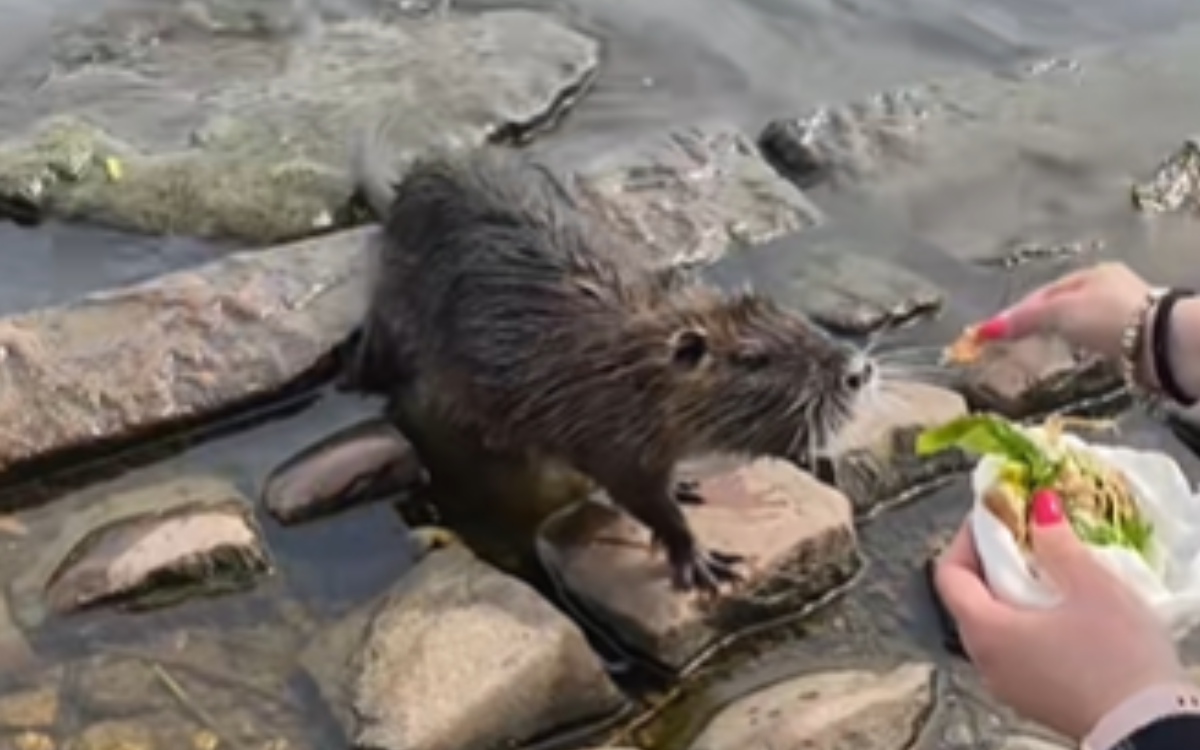
A woman vacationing in Europe thought she had captured a cute encounter with a “friendly” beaver on camera.
It was only when she got home and showed her parents the footage that the truth emerged.
Travel not only helps broaden horizons, it can actually be good for your health. In 2023, a study published in the Journal of Transport & Health found people who are able to travel freely outside their local area reported experiencing better health compared to those who faced constraints.
Nisse Sharma, from Manchester in the U.K., is one of those who has always enjoyed the freedom to travel regularly, but one recent encounter abroad could easily have ended up being bad for her health.
“I traveled to Prague for a trip to explore the city a bit more as I’ve been a few times, but I had never walked down near the river banks,” Sharma told Newsweek. “This time I decided to take a walk down the river banks up to the water and saw the animal coming close to the rocks where people can stand.”

TikTok/nissesharma
As the video Sharma posted to her TikTok, nissasharma, explained, she initially thought she was encountering a “friendly” beaver. “I assumed it was a beaver as to me it looks pretty similar and I don’t know much about beavers apart from that they live in rivers,” she said.
That goes some way to explaining what she did next. “I thought since it was a beaver that we could feed it,” Sharma said. “Although I’d never seen a beaver in real life before, they’re often portrayed as friendly in the media. So I started feeding it some sandwiches.”
Sharma’s video captures the moment she began feeding the animal. It was a cute encounter, with Sharma’s new animal friend happy to accept the snack with little to no fuss. “It wasn’t until a few weeks later that I discovered that it wasn’t a beaver, when I showed my parents the video and they corrected me,” Sharma said.
That was when Sharma was informed that what she had fed that day wasn’t a beaver, but was actually a semiaquatic type of rodent called a nutria or coypu. Sharma couldn’t help but laugh. “I thought it was hilarious that I was showing off having fed a beaver to my family just to find out that it’s actually what the Czech people call a ‘water rat’ or ‘river rat,'” she said.
Though Sharma’s encounter was an entirely positive one, close encounters with nutrias are not necessarily advised. The U.S. Department of Agriculture has previously warned that nutria pose a risk to “public health and safety.”
“The rodents can serve as hosts for several pathogens, including tuberculosis and septicemia, which can infect people, pets, and livestock,” it warned. “In addition, nutria can carry parasites, such as blood flukes, tapeworms, and liver flukes and a nematode known to cause a rash called ‘nutria itch.'”
Sharma escaped unscathed, of course, while video of the encounter went viral, racking up over 1.3 million views. Though the idea of feeding a “water rat” may have left some viewers horrified, Sharma has few regrets about the encounter though if she did it again “probably would’ve thrown the food towards it instead of hand-feeding it.”
If anything, it has taught her “not to judge an animal by the way it’s portrayed.” “I went close to it thinking it was a beaver due to them being portrayed as friendly, yet when I researched afterwards I found out that beavers are actually quite hostile and can be dangerous,” she said. “On the other hand most people would hesitate to get close to a rodent such as the one in the video due to them having a bad image but it was super friendly.”
She ultimately hopes that those watching her videos learn the importance of treating all animals “with kindness” as well as doing a little research before approaching a wild animal in a foreign country.




